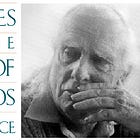Mind the Gap: How Indirect Speech Bridges What’s Said and What’s Meant
Searle’s Speech Acts and the Art of Implicature
In my previous article on John Searle’s theory of language, I showed how speech acts are not just about the words spoken but the intentions behind them. From promises to commands, Searle argued that utterances perform actions when tied to shared conventions and contexts. But what happens when we say one thing but mean another?
Enter indirect speech acts. These occur when the literal meaning of an utterance diverges from its intended meaning. For example, when someone says, “It’s cold in here,” they might not merely be making an observation but hinting at closing the window.
Years ago, during a business trip to Tokyo, I found myself lost on the subway system. Instead of directly asking for help, I commented, “This map is so detailed!” A fellow passenger immediately pointed out the right platform. A simple observation on my part became a polite, indirect request, seamlessly understood. We all have a similar experience of the subtle art of indirect communication, where words alone don’t always tell the full story.
In this article, I will explore how Searle’s insights on speech acts connect with Paul Grice’s theory of implicature, revealing the mechanics behind these indirect interactions.
Indirect Speech Acts: The Basics
Indirect speech acts occur when:
The speaker’s literal words (locution) carry one meaning but the speaker’s intended meaning (illocution) carries another.
Dinner Party
Guest: “This wine is… interesting.”
Host: “I’ll grab a different bottle!”
Here, the guest’s literal statement is neutral, but the tone and context suggest dissatisfaction. The host infers the true intent and takes action without the guest needing to explicitly complain.
Key to indirect speech is context. Without it, the intended meaning often remains unclear. In Searle’s terms, indirect speech acts rely on the cooperative nature of communication, where the hearer decodes the speaker’s true intent.
The Role of Implicature
This is where Grice’s theory of implicature enters. Implicature is the process by which listeners infer additional meaning based on conversational maxims like relevance, quantity, and manner. Consider this everyday exchange:
Flatmate A: “Are you doing the dishes tonight?”
Flatmate B: “I cooked dinner.”
Flatmate B doesn’t directly say “No,” but the implicature is clear: they believe the chore should fall to A.
Grice and Searle both underscore that such exchanges depend on shared knowledge. Without mutual understanding, these subtle cues can lead to confusion or conflict. For instance, in intercultural settings, indirect speech acts can sometimes backfire:
Scenario: A British manager in a Japanese office says, “Perhaps we could revisit the deadline.”
Interpretation:To the British listener this means “We’re behind schedule; we need a new deadline.”
To the Japanese listener this might imply “The current deadline is fine, but we’ll discuss improvements later.”
You can read more of cross-cultural communication problems in my article of the The Daimler-Chrysler merger and the role linguistic’’ concepts of cross-cultural communication helped avoid a costly fallout.
Why Use Indirect Speech?
Indirectness in communication isn’t just a linguistic flourish; it serves practical functions:
Politeness: Softens requests or criticisms.
“You might want to rethink that approach” instead of “You’re wrong.”
Humour: Adds wit by saying less but implying more.
Sarcasm: “Oh, brilliant, another two-hour meeting!”
Strategic Ambiguity: Protects the speaker from direct commitment.
Let’s see how it goes.”
During a tense work meeting, my colleague commented, “Well, it’s certainly a bold proposal.” While no one laughed outright, it was clear that ‘bold’ wasn’t meant as praise. The indirect critique was far more effective (and diplomatic) than a blunt rejection!
Building Towards Presuppositions and Entailments
Indirect speech acts often overlap with presuppositions (assumed truths) and entailments (logical consequences). For example:
Utterance: “Even John passed the exam.”
Presupposition: John was expected to fail.
Entailment: John took and passed the exam.
Consider the indirectness in family dynamics:
Parent: “Your room isn’t going to clean itself.”
Presupposition: The room is dirty.
Implicature: Clean your room.
Understanding indirectness lays the groundwork for unpicking these more intricate layers of meaning, which I’ll explore in the next article.
Searle’s theory of speech acts and Grice’s implicature show how indirect communication enriches human interaction. Whether navigating polite requests, humour, or ambiguity, these insights reveal how language achieves far more than what meets the ear. As we transition to presuppositions and entailments, I’ll show how even deeper layers of meaning are embedded in our everyday exchanges.
©Antoine Decressac — 2024/2025.
As an Amazon Associate, I earn from qualifying purchases.
Suggested reading if you want to find out more on implicature and speech acts:
Wilson, D. & Sperber, D. (2021). Relevance: Communication and Cognition. A classic updated for modern readers, blending theory and practice.
Cutting, J. (2020). Pragmatics: A Resource Book for Students. Covers speech acts and implicature with clear examples.
Mey, J. (2021). Pragmatics: An Introduction (4th Ed.). A user-friendly guide with recent updates on indirectness.
Culpeper, J., Haugh, M., & Kádár, D. (2023). The Palgrave Handbook of Linguistic (Im)politeness. Explores how indirect speech acts relate to politeness strategies.





